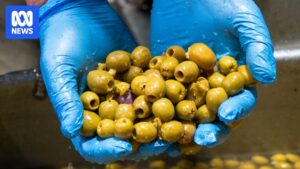
New research into the anatomy of blue sharks (Prionace glauca) has unveiled a unique nanostructure in their skin responsible for their iconic blue coloration. Intriguingly, this discovery also suggests a potential capacity for color change. The research, conducted by a team at City University of Hong Kong, highlights the complex interplay of biological structures that produce this rare hue.
“Blue is one of the rarest colors in the animal kingdom, and animals have developed a variety of unique strategies through evolution to produce it, making these processes especially fascinating,” says Dr. Viktoriia Kamska, a post-doctoral researcher in the lab of Professor Mason Dean.
Unveiling the Secret of Shark Skin
The team discovered that the blue shark’s color originates in the pulp cavities of their tooth-like scales, known as dermal denticles, which armor the shark’s skin. The key features of this color-producing mechanism are guanine crystals, which act as blue reflectors, and melanin-containing vesicles called melanosomes, which absorb other wavelengths.
“These components are packed into separate cells, reminiscent of bags filled with mirrors and bags with black absorbers, but kept in close association so they work together,” explains Dr. Kamska. This collaboration between pigment and structured material enhances color saturation.
“When you combine these materials together, you also create a powerful ability to produce and change color,” says Professor Dean. “What’s fascinating is that we can observe tiny changes in the cells containing the crystals and see and model how they influence the color of the whole organism.”
Advanced Techniques and Findings
This anatomical breakthrough was achieved using a combination of fine-scale dissection, optical microscopy, electron microscopy, spectroscopy, and other imaging techniques to characterize the form, function, and architectural arrangements of the color-producing nanostructures. “We started looking at color at the organismal level, on the scale of meters and centimeters, but structural color is achieved at the nanometer scale, so we have to use a range of different approaches,” says Professor Dean.
Identifying the nanoscale culprits behind the shark’s blue color was only part of the equation. Dr. Kamska and her collaborators also used computational simulations to confirm which architectural parameters of these nanostructures are responsible for producing the specific wavelengths of the observed spectral appearance.
“It’s challenging to manually manipulate structures at such a small scale, so these simulations are incredibly useful for understanding what color palette is available,” says Dr. Kamska.
Implications for Environmental Adaptation and Engineering
The discovery reveals that the shark’s trademark color is potentially mutable through tiny changes in the relative distances between layers of guanine crystals within the denticle pulp cavities. Narrower spaces between layers create the iconic blues, while increasing this space shifts the color into greens and golds.
Dr. Kamska and her team demonstrated that this structural mechanism of color change could be driven by environmental factors affecting guanine platelet spacing. “In this way, very fine scale alterations resulting from something as simple as humidity or water pressure changes could alter body color, that then shape how the animal camouflages or counter-shades in its natural environment,” says Professor Dean.
For example, the deeper a shark swims, the more pressure their skin is subjected to, likely pushing the guanine crystals closer together, which should darken the shark’s color to better suit its surroundings. “The next step is to see how this mechanism really functions in sharks living in their natural environment,” says Dr. Kamska.
Potential Applications Beyond Marine Biology
While this research provides important new insights into shark anatomy and evolution, it also holds potential for bio-inspired engineering applications. “Not only do these denticles provide sharks with hydrodynamic and antifouling benefits, but we’ve now found that they also have a role in producing and maybe changing color too,” says Professor Dean.
This discovery could have implications for improving environmental sustainability within the manufacturing industry. “A major benefit of structural coloration over chemical coloration is that it reduces the toxicity of materials and reduces environmental pollution,” says Dr. Kamska. “Structural color is a tool that could help a lot, especially in marine environments, where dynamic blue camouflage would be useful.”
“As nanofabrication tools get better, this creates a playground to study how structures lead to new functions,” says Professor Dean. “We know a lot about how other fishes make colors, but sharks and rays diverged from bony fishes hundreds of millions of years ago – so this represents a completely different evolutionary path for making color.”
This research, funded by Hong Kong’s University Grants Committee, General Research Fund, is being presented at the Society for Experimental Biology Annual Conference in Antwerp, Belgium, on July 9, 2025.







